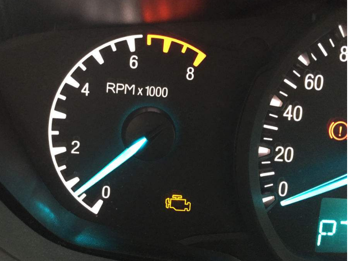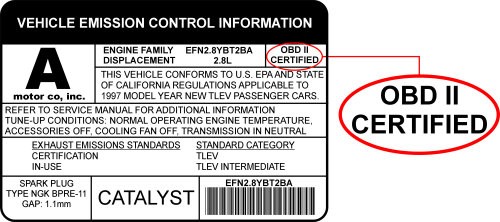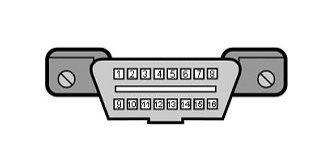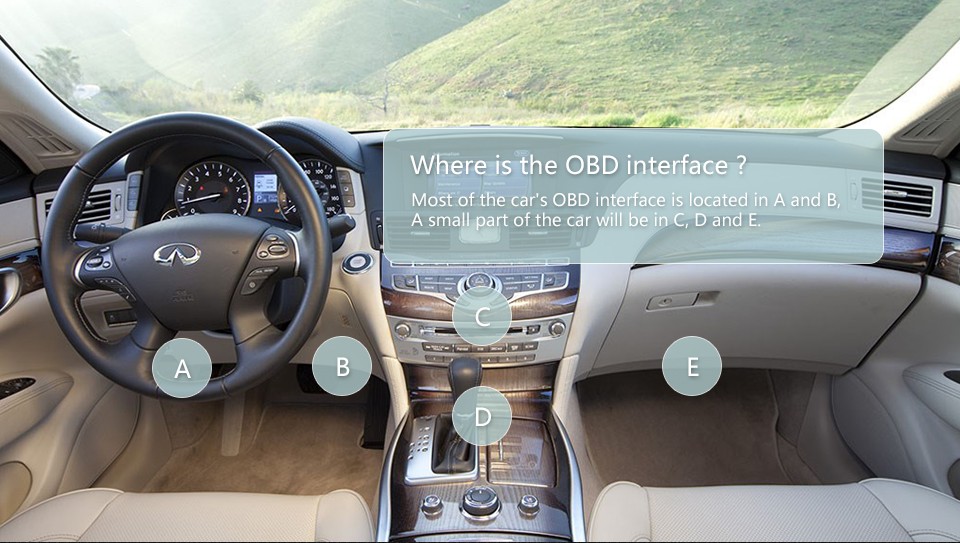- Location: Home > Blog > What is OBD & OBDII/2 ?
What is OBD & OBDII/2 ?

2018-04-24 21:51:24
WHAT IS OBD ?
OBD stands for ON-BOARD-DIAGNOSTICS.It is a system to monitor the car's exhaust gas emissions at any time from its operating condition. Once it exceeds the limit, it will immediately issue a warning. That's the first purpose when this system was developed. Later on, the system was developed more deelpy. The car makes want to make the diagnostics and after-sale more easily. the OBD was added with fault code storage. According to the fault code, maintenance personnel can quickly and accurately determine the nature and location of the fault.
Above is the first generation of OBD, AKA, OBD1.
Starting rom 1996, The Society of Automotive Engineers (SAE) has developed a set of standards that require auto manufacturers to provide a unified diagnostic model in accordance with the OBD-II standard. In the late 1990s, cars entering the North American market were Set the OBD according to the new standard. OBD-II has made great progress in diagnostic functions and standardization. Fault indicators, diagnostic connections, communication protocols between external devices and ECUs, and fault codes are standardized by the corresponding standards.
Then it comes to what we knows, OBDII/ OBD2
European marketplace would like to call it EOBD, and Japan would name it as JOBD, but they are almost the same system and functions.


Above is the common OBDII 16pin diagnostic port, this can usually be found under the dashboard, some EU cars are located in the middle of driver's cab.

But you should be noticed that, the car with OBDII 16 pins is not meaning it has to work fine with OBD2 devices. It's mainly because of the internal protocols that is using between the car and diagnostic tools.
The OBDII protocols is listed as belows:
•1.SAE J1850 PWM(41.6Kbaud)
•2.SAE J1850 VPW(10.4Kbaud)
•3.ISO9141-2(5 baud init,10.4Kbaud)
•4.ISO14230-4 KWP(5 baud init,10.4 Kbaud)
•5.ISO14230-4 KWP(fast init,10.4 Kbaud)
•6.ISO15765-4 CAN(11bit ID,500 Kbaud)
•7.ISO5765-4 CAN(29bit ID,500 Kbaud)
•8.ISO15765-4 CAN(11bit ID,250 Kbaud)
•9.ISO15765-4 CAN(29bit ID,250 Kbaud)
•A.SAE J1939 CAN(29bit ID,250*Kbaud)
•B.USER1 CAN(11*bit ID,125*Kbaud)
•C.USER2 CAN(11*bit ID,50*kbaud)
Even though it compatible with most cars, but different regions support the vehicle OBD2 protocol at different times, or some car is special design, so it may not compatible with some cars which do not support OBD2 protocol. Especially Japanese and Korean car brand.
Categories
Contact Us
NEXPEAK®
Monday - Friday, 9am to 5pm PST
TEL: +86 755-2100 0230
E-mail: Support@nexpeaktech.com
Address: 228, Liangji Building, Donghuan 1st Rd, Longhua Dist, Shenzhen, Guangdong, P.R. China
